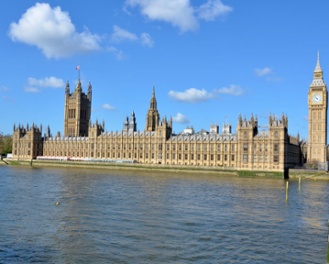UX and Design
The quest for joined-up user journeys in the public sector: will there be a happy ever after?
10 September 2021 • 8 min read
.png?width=1920&height=836&name=The%20quest%20for%20joined-up%20user%20journeys%20in%20the%20public%20sector-%20will%20there%20be%20a%20happy%20ever%20after_%20(1).png)
A few months ago GDS published their 2021-2024 strategy. Tom Reid described his vision in a series of interviews and articles, creating a welcome buzz about a government function that has seemed to be dwindling in recent years.
One of the key concepts within the vision put forward by Reid is the idea of joined-up user journeys such as having a baby or preparing to retire. As an ex-civil servant who worked in digital leadership roles for fifteen years, I’m a massive supporter of such an approach. If you are going through a major event in your life, the last thing you want to be doing is trawling through GOV.UK trying to find all the things that you need to do.
Government may be chunked up into silos but expecting people to know what fits where often just increases frustration and negative emotions at a challenging time.
A few commentators, including Tom Reid himself, have noted that joined-up services aren’t new. If you look all the way back to the Blair government of the late 90s and early 2000’s you will find the 1999 The Modernizing Government White Paper which talks about “matching services more closely to people’s lives”. Screenshots of ukonline.gov.uk in 2000 show ‘Life Episodes’ like Moving Home, Death, Bereavement and, yes, Having a Baby.
Hasn't government been here before?
So, what’s going on? Did we do this already or have we been spectacularly failing for over 20 years?
Well, yes and no to both.
UKonline’s breakthrough was to provide links to services and content all in one place, which was radical at the time, but users still had to:
- Know that UKonline existed and find it.
- Know whether the service they needed was provided by central government or local government.
- Follow a link to the relevant departmental site and decipher a load of policy-speak to find out what they needed to do, which then often wasn’t possible online and they ended up getting an address to visit in person or a copy of a form to print off and post.
What Tom Reid is suggesting is a much better experience. As he says, the conditions for success are stronger now. These days a load of links on a page is far from enough; we can do much more to give users a joined up experience. The quest is for much deeper linking of data, providing details once and reshaping services so a lot of the hard work is done for you. So if this is what we want to do now, how far have we really come?
GOV.UK: an important step forward
GOV.uk was a huge step towards the fairy tale. Suddenly central government was brought together in a single central searchable intelligible place. GOV.uk today may not be perfect and GDS are rightly reviewing how it works but I still applaud GDS for achieving what at the time looked like an impossible task - all those departments, teams, politics, content rewriting, all achieved by a strong imperative and a mandate from above. But while GOV.uk brought user experience forward by light years, to actually transact with government you still need to identify and engage with lots of different services, meaning that almost 10 years later things don’t seem to have moved on that much.
But there has been progress.
Linking up within government departments
Increased use of user research and service design has helped linking up within departments. AND Digital applied this to our work with HMCTS’ Apply for Probate service.
We wanted to build a service that made things easier for users at a time when they were often struggling with grief following the death of someone close; user research and testing was an emotional activity for all involved and the problems that we observed were exacerbated by the immense confusion experienced by our users between probate and inheritance tax. So much of our effort was spent trying to clarify the difference and to hand our users gracefully off to HMRC’s relevant services, that we started asking ourselves why this needed to happen at all. Why did users have to provide two sets of information to two different government departments at a point of time when all they wanted to do was grieve?
We ended up contacting HMRC’s inheritance tax team and started conversations about how we might be able to link these services up more. These discussions gathered momentum and grew into the ‘What to do when someone dies’ Service Community, one of the first within government, and a movement which has continued to gather momentum and led to big changes in Probate and beyond.
Mapping the service landscape
Our colleagues at DfE have also done some fantastic work around service design over the last three years mapping their service landscape. They needed to understand the services they were providing directly or through their agencies and where they could be improved. It was a significant task as there were over 400 services which then needed to be classified into service lines based on users’ experience.
Tangible results from their actions include policy and service design recommendations that fed into the ‘Skills for Jobs’ white paper and today a team is working on mapping Early Years Services and policies through a child's early life from conception to age 5, touching on the ‘having a baby’ user journey mentioned in Tom Reid’s strategy. Complexity continues to rear its head as the team identifies lots of different journeys a child may go through depending on circumstances and needs and joining up is going to be difficult and will take time, but the immense value that it will have to the ultimate end users - often vulnerable young children - is a great motivator.
What challenges remain?
But despite the advances there are many dragons still to tackle on the road to achieve ’s GDS’s joined up aspirations:
- Accountability for budgets remains with individual Departments or in programmes, driving a natural inclination to look inwards and where linking up is often discouraged
- Departments really are different and have different priorities and ways of looking at things which then means they make policy independently from each other and makes coming together harder
- Different architectures and technologies often make joining up technically difficult and expensive.
- While it’s now easy to share data people are nervous about doing so and getting agreement is hard.
- Suppliers and contracts are not conducive to linking up. Suppliers want to do the right thing and deliver great outcomes but blurred edges and accountabilities make things difficult.
- Communication is hard - whether around using shared tools across departments for joint working or even just finding times for meetings to bring all stakeholders together.
How can we overcome these challenges to be successful?
Success ultimately depends on three things.
Becoming more confident about working with data
GDS need to succeed in breaking down barriers around data and identity that have to date eluded them. The new GDS strategy is optimistic and contains a set of things that will support whole user journeys including single sign on, and connecting data around individuals.
We’ve heard a lot of this before and to date it has been held back by reticence of departments to share data and concerns around data protection. GDS and CDDO will need to reach out to a wide group of people, lead by example, and communicate their successes as well as show serious thought about the ethical consequences of data sharing.
New incentives to encourage this way of thinking
Joining up needs to be taken more seriously and will need a bit of carrot and stick to make the aspiration happen. Along with GOV.UK I think the Government Service Standard is the most important steps forward in uk government-citizen relationships and its link to funding meant that user quality suddenly became essential and not expendable. If we want to join up government services and to break through organisational barriers we need a similar mandate and incentive.
People aren’t going to do it just because it’s the right thing to do, no matter how great an example GDS sets and in fact the recently published Organising for Digital Delivery report recommends the UK Government“Re-focus and add teeth to the centre”. After all, Mike Bracken’s conclusion at the end of his GDS tenure was that Departments’ greatest achievements were because “nobody was looking.”
Working collaboratively with external partners
Suppliers like AND have a role to play. If I look back at our last year as DfE’s northern digital pipeline partner our remit has given us the flexibility to be able to look more widely than individual projects and see where we have been able to link up some of the different elements of what we are doing, for example technology standards research to inform schools buying channels, purely because our delivery managers meet up and discuss what they are doing.
Suppliers can often see these opportunities because they work in different areas and we need to find ways of surfacing opportunities whilst managing commercial relationships and driving value for money.
Will there be a happy ever after for joined-up user journeys in the public sector
Do I believe we’ll live happily ever after? I want to believe in the fairy tale - I’ve been slowly chipping away towards it for the past 17 years. However, I'm not convinced we can get to it. This isn't for lack of trying but rather because when we get close to the end we rightly want to go even further.
Tom Reid says “we got the strategy right a long time ago.” Maybe we did - we just need to get it right again. I look forward to AND playing its part in this next phase of the quest and delivering even better services for citizens. Let’s all turn the fairy tale into a reality so that we can finally move on to the next page.
Thanks to Magda Bober at DfE.
Emma Charles is a Principal Consultant at AND Digital.
Talk to us about how we support government and public sector organisations on their digital transformation journey. Contact us.



